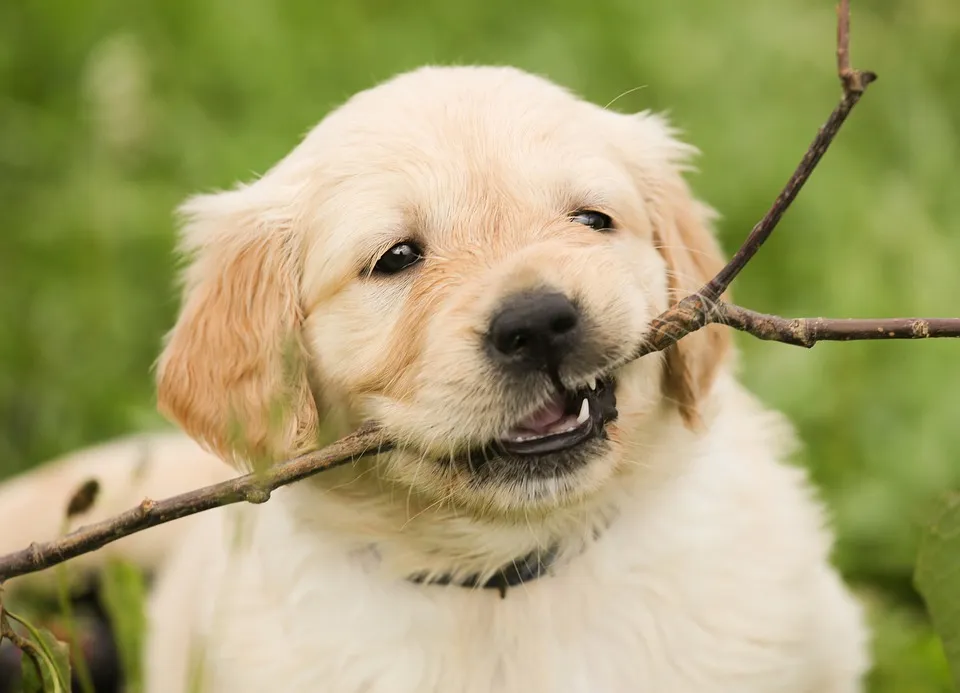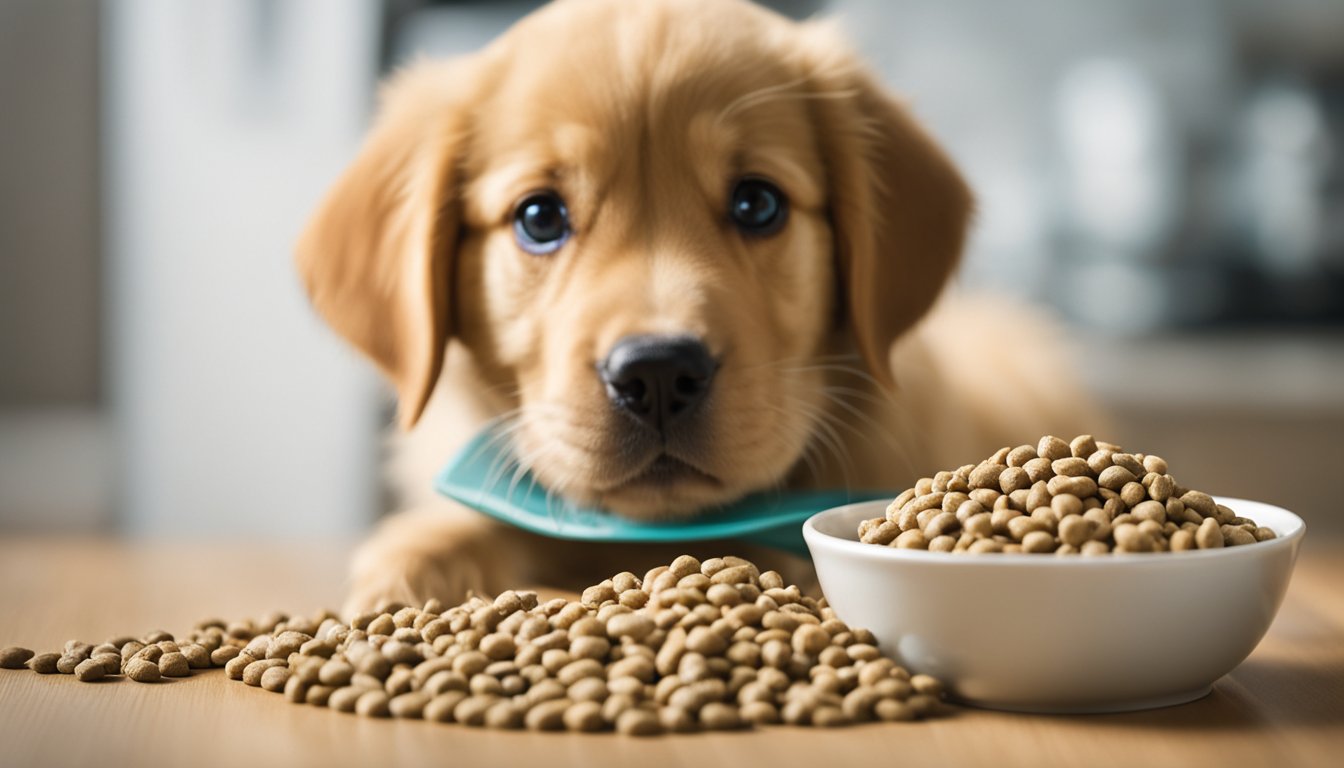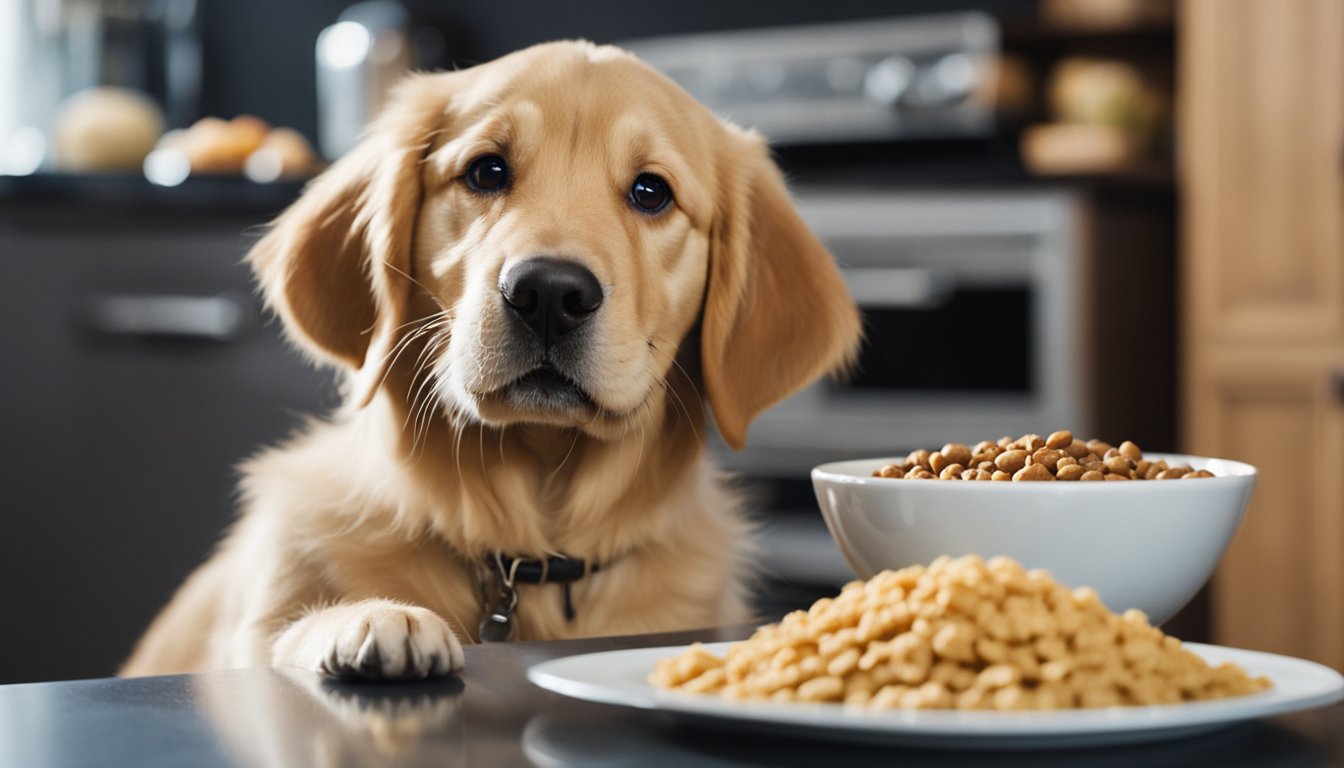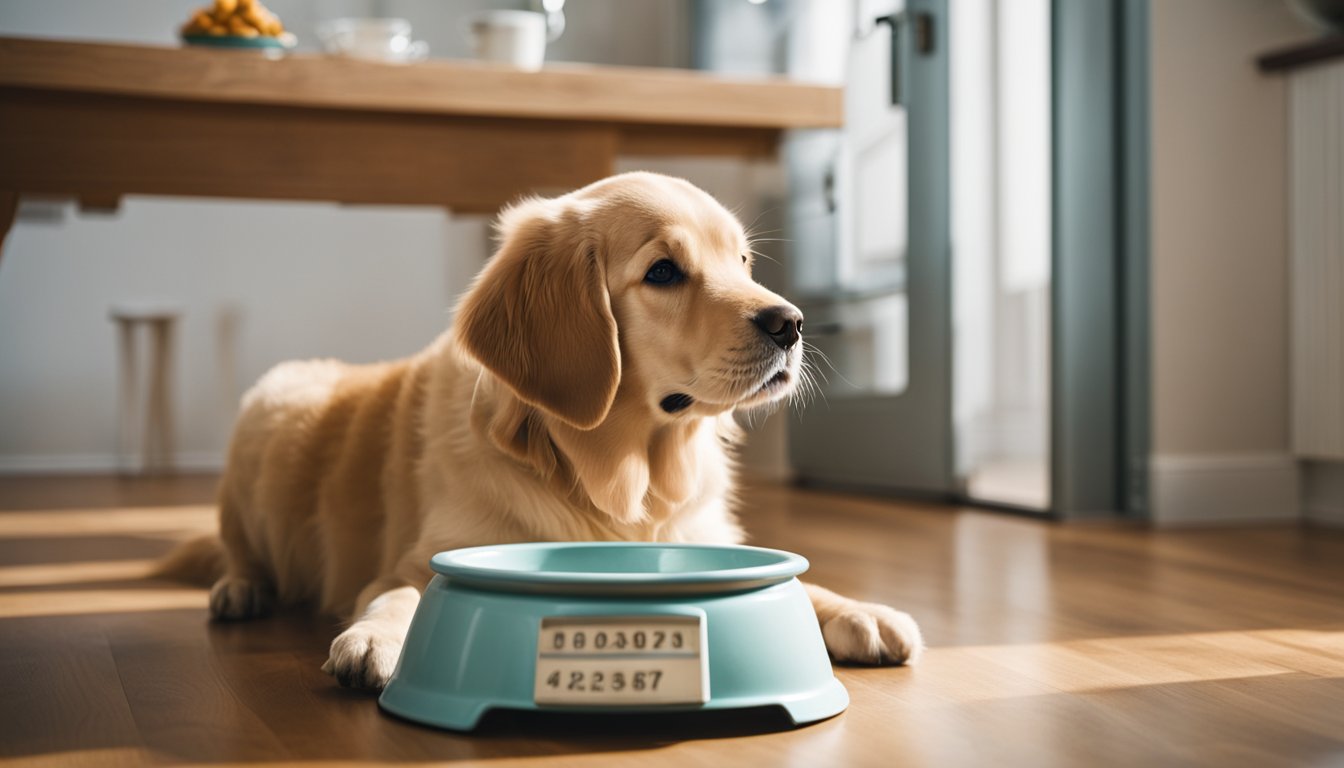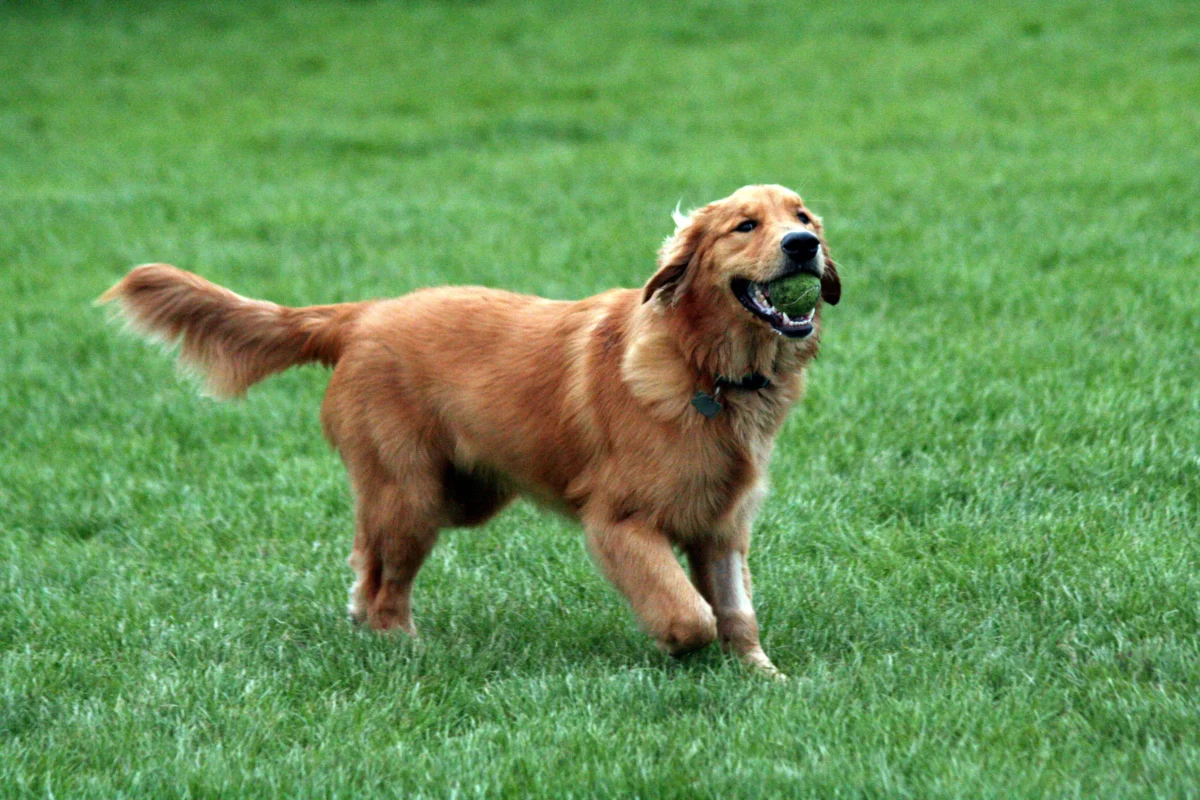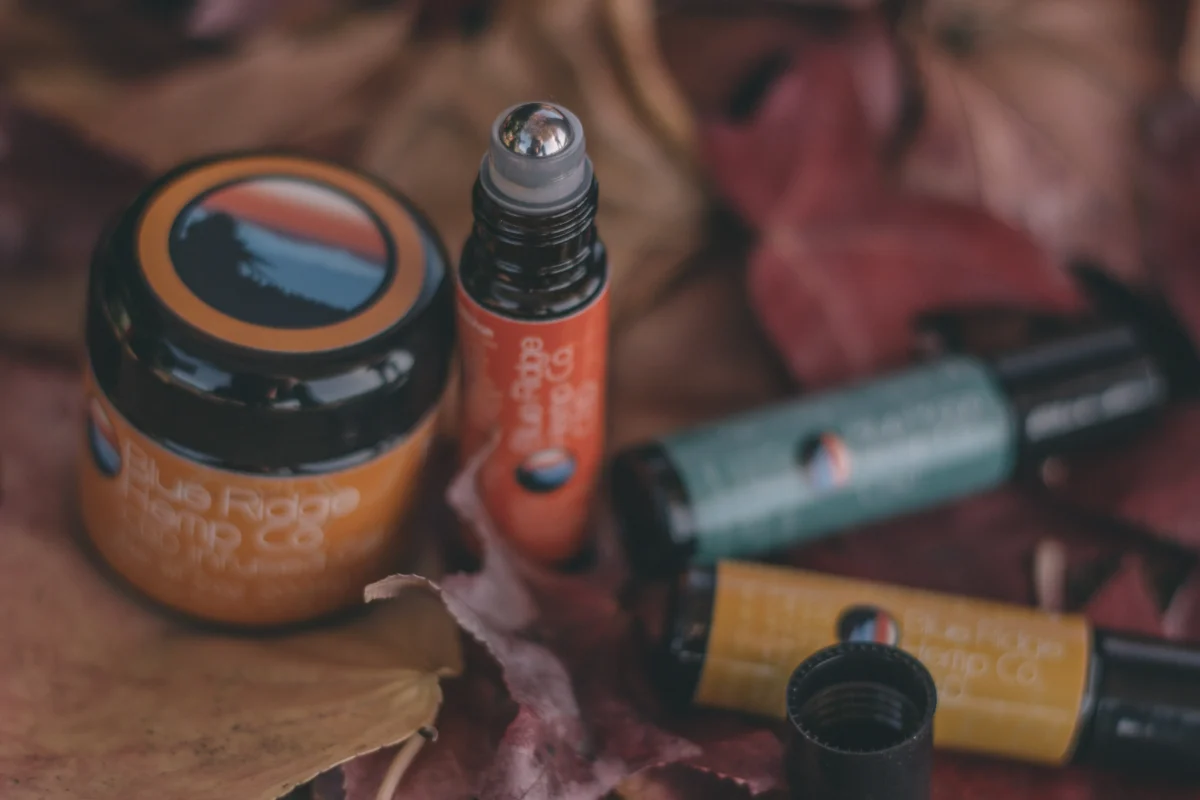Feeding your new Golden Retriever puppy the right amount of food is crucial for their growth and development. But with so many different types of puppy food and feeding guidelines, it can be overwhelming to know where to start. In this article, we’ll provide you with all the information you need to know about how much to feed your Golden Retriever puppy.
Understanding your puppy’s nutritional needs is the first step to feeding them the right amount of food. Golden Retriever puppies require a diet that is high in protein and fat to support their growth and development. It’s important to choose a puppy food that is specifically formulated for their nutritional needs. Feeding your puppy the right amount of food will help prevent obesity and other health concerns later in life.
Feeding guidelines for Golden Retriever puppies can vary depending on their age, weight, and activity level. As a general rule, puppies should be fed three to four times a day until they are six months old. After six months, you can start feeding them twice a day. It’s important to measure your puppy’s food to ensure they are getting the right amount. Overfeeding your puppy can lead to obesity and other health concerns.
Understanding Your Puppy’s Nutritional Needs
https://www.youtube.com/watch?v=jbiQQd3vbb4&embed=true
Feeding your Golden Retriever puppy the right amount of food is crucial for their growth and development. To ensure that your puppy is getting the right nutrients, it’s important to understand their nutritional needs. In this section, we’ll discuss the importance of age and weight, nutrient requirements for growth, and the role of activity level.
Importance of Age and Weight
Your puppy’s age and weight are important factors to consider when determining how much to feed them. As they grow, their nutritional needs will change. According to Golden Retriever Society, puppies should eat three to four times a day until they are six months old at scheduled intervals. After six months, you can start feeding them two meals a day. It’s important not to overfeed your puppy, as they could become overweight.
Nutrient Requirements for Growth
Your puppy’s growth and development require specific nutrients. Protein is essential for building and repairing tissues, while carbohydrates provide energy. Fiber helps with digestion and promotes healthy bowel movements. According to Love Your Dog, Golden Retriever puppies need a diet that is high in protein and low in fat to support their growth. They also need a balance of vitamins and minerals to support their immune system.
Role of Activity Level
Your puppy’s activity level also plays a role in how much food they need. Puppies that are more active will require more calories than those that are less active. According to Pet Keen, large breed dogs such as Golden Retrievers need three feedings per day until they’re six months old. After six months, you can switch to two feedings per day. However, the amount of food you feed your puppy will depend on their weight, age, and activity level.
In summary, understanding your Golden Retriever puppy’s nutritional needs is crucial for their growth and development. By considering their age, weight, nutrient requirements, and activity level, you can ensure that they are getting the right amount of food and nutrients.
Feeding Guidelines for Golden Retriever Puppies
https://www.youtube.com/watch?v=eyohKAHVgrY&embed=true
If you’re a new pet owner, you might find it challenging to determine how much to feed your Golden Retriever puppy. Feeding your puppy the right amount of food is crucial to their growth and development. In this section, you’ll learn about the feeding guidelines for Golden Retriever puppies.
Determining the Right Amount
The amount of food your Golden Retriever puppy needs depends on their age, weight, and activity level. A good rule of thumb is to feed your puppy three meals a day until they are six months old. After that, you can switch to two meals a day. You should also consider the calorie content of the food you’re feeding your puppy. According to Golden Retriever Society, a puppy weighing between 10-20 pounds needs about 1.5-2 cups of food per day. A puppy weighing between 20-50 pounds needs about 2-3 cups of food per day, and a puppy weighing between 50-75 pounds needs about 3-4 cups of food per day.
Feeding Schedule and Frequency
It’s essential to establish a feeding schedule and stick to it. Feeding your puppy at the same time every day will help them develop a routine and prevent overeating. You should also consider the frequency of feeding. According to Puppy In Training, puppies should be fed three times a day until they are six months old. After that, you can switch to two meals a day.
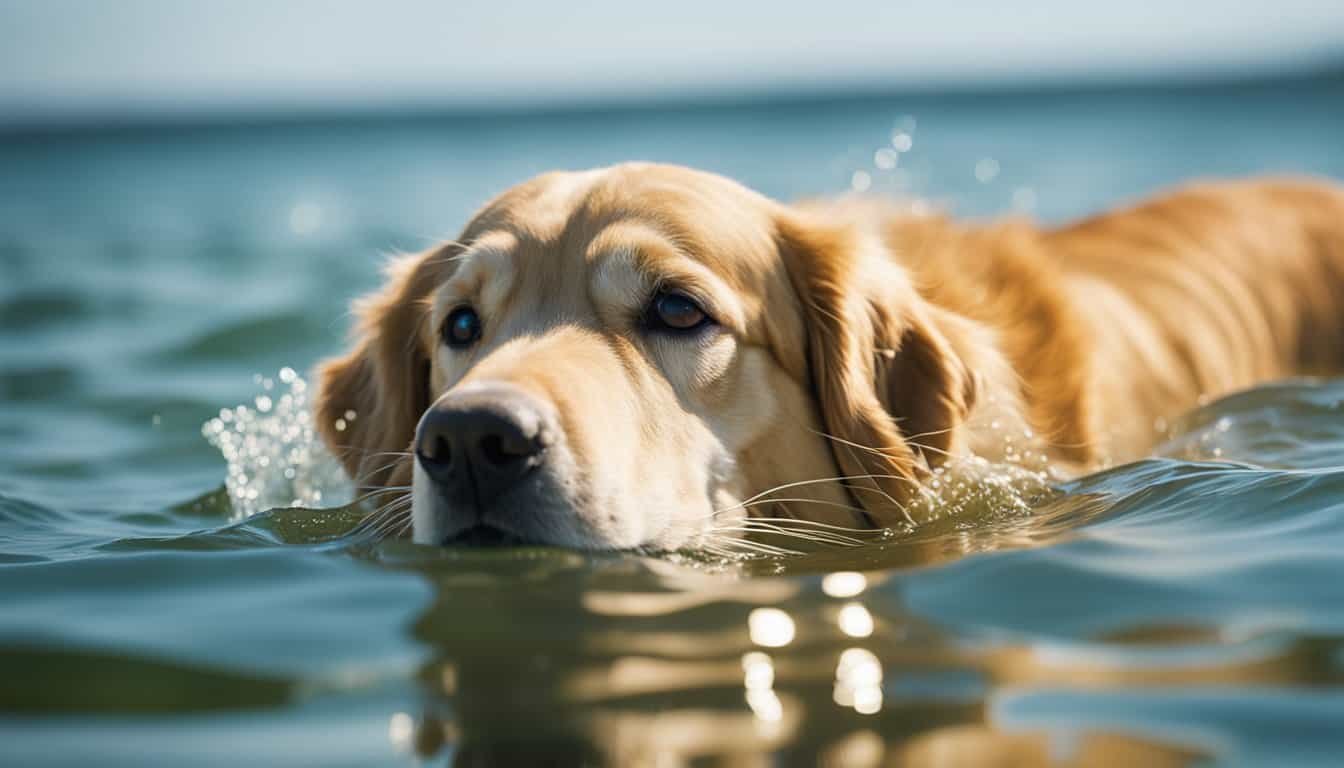
Switching from Puppy to Adult Food
« Why Do Dogs Howl: Understanding the Reasons Behind This Common Behavior
Best Age to Breed a Golden Retriever: Tips and Guidelines »
As your Golden Retriever puppy grows, you’ll need to switch them from puppy food to adult food. According to Love Your Dog, you should start transitioning your puppy to adult food when they are between 12-18 months old. You can do this by gradually mixing the adult food with the puppy food over a period of 7-10 days.
In summary, feeding your Golden Retriever puppy the right amount of food is crucial to their growth and development. You should determine the right amount of food based on their age, weight, and activity level. Establishing a feeding schedule and frequency will help them develop a routine and prevent overeating. Finally, you should switch your puppy to adult food when they are between 12-18 months old.
Choosing the Best Food for Your Puppy
https://www.youtube.com/watch?v=IGG5m4OH9NY&embed=true
Feeding your golden retriever puppy with the right food is essential to ensure they grow healthy and strong. However, with so many types of dog food available in the market, it can be overwhelming to choose the right one for your furry friend. Here are some factors to consider when choosing the best food for your puppy.
Types of Dog Food
There are several types of dog food available in the market, including kibble, wet food, and raw diets. Kibble is the most common type of dog food and is available in various formulas and brands. Wet food is more expensive than kibble and contains more water. Raw diets are becoming increasingly popular, but they require careful preparation and can be expensive.
Popular Brands and Formulas
Some popular brands that offer large breed puppy food include Purina Pro Plan and Royal Canin. Large breed puppy food is formulated to meet the specific nutritional needs of puppies that are expected to grow into large dogs. It contains the right balance of fat, protein, and calories to support their growth and development.
Supplements and Treats
Supplements and treats can be a great addition to your puppy’s diet, but it’s important to choose them carefully. Avoid giving your puppy human food as it can be harmful to their health. Instead, choose treats that are specifically formulated for puppies and are low in calories. Supplements can also be beneficial, but it’s important to consult with your veterinarian before giving your puppy any supplements.
In conclusion, choosing the best food for your golden retriever puppy requires careful consideration of their nutritional needs, size, and preferences. By selecting the right type of food, brand, and formula, and supplementing their diet with treats and supplements, you can ensure your puppy grows up healthy, happy, and strong.
Health Concerns Related to Feeding
Feeding your Golden Retriever puppy the correct amount of food is crucial for their overall health. Overfeeding can lead to obesity, which can cause a variety of health problems such as joint pain, trouble breathing, and even heart disease. It is important to monitor your puppy’s weight and adjust their food portions accordingly.
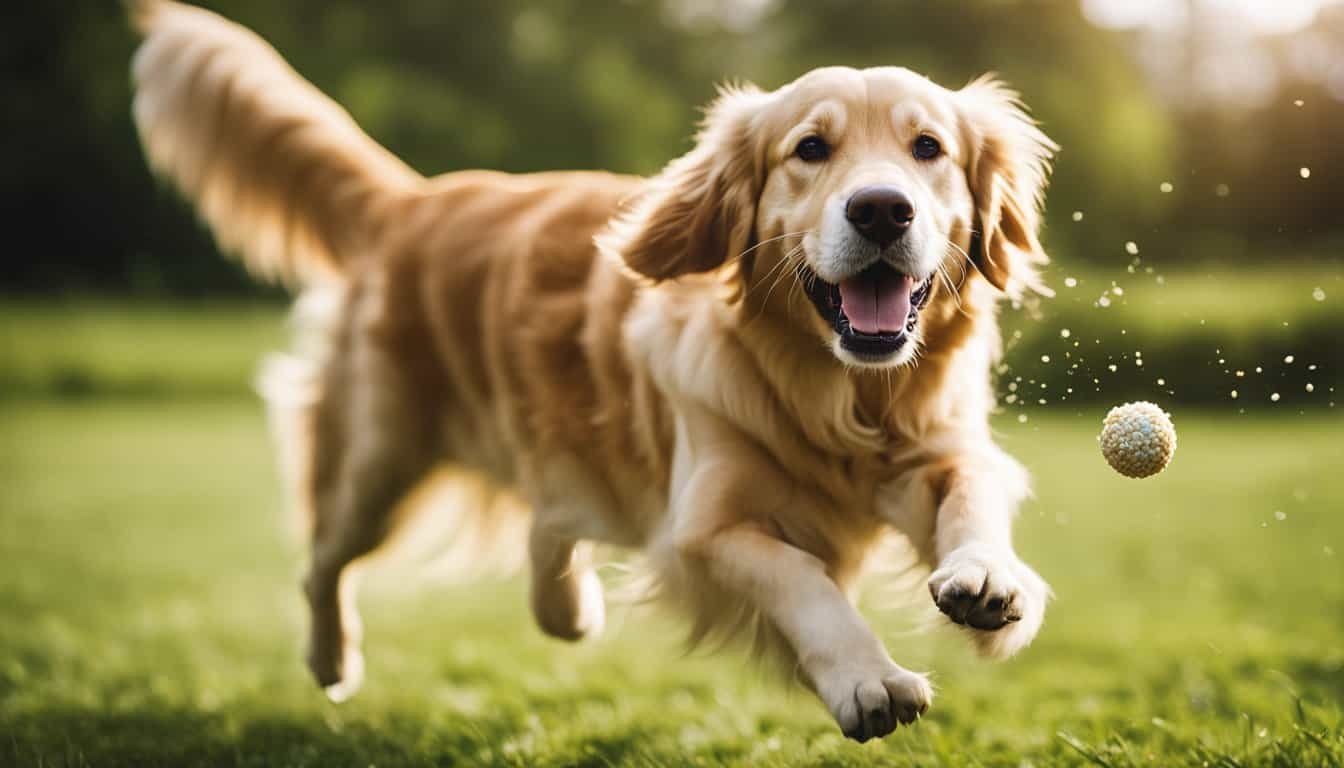
Preventing Overfeeding and Obesity
To prevent overfeeding and obesity, it is important to pay attention to your puppy’s feeding frequency and portions. Golden Retriever puppies should eat three to four times a day until they are six months old at scheduled intervals. They require more calories and frequency at this young age. After six months, you can reduce the frequency of feedings to twice a day.
It is also important to avoid feeding your puppy table scraps or human food as this can lead to weight gain and other health issues. Stick to high-quality dog food that is specifically formulated for large breed puppies.
Identifying Allergies and Dietary Needs
Golden Retrievers can have allergies and dietary needs just like humans. It is important to pay attention to any signs of allergies such as itching, rashes, or gastrointestinal issues. If you suspect your puppy has an allergy, consult with your veterinarian to determine the best course of action.
Feeding Senior Golden Retrievers
As your Golden Retriever ages, their dietary needs may change. Senior dogs require less calories and may need a different type of food that is formulated for their specific needs. It is important to monitor their weight and adjust their food portions accordingly.
Senior dogs may also develop health issues such as arthritis, which can make it difficult for them to move around. Regular exercise and a healthy diet can help prevent these issues from occurring.
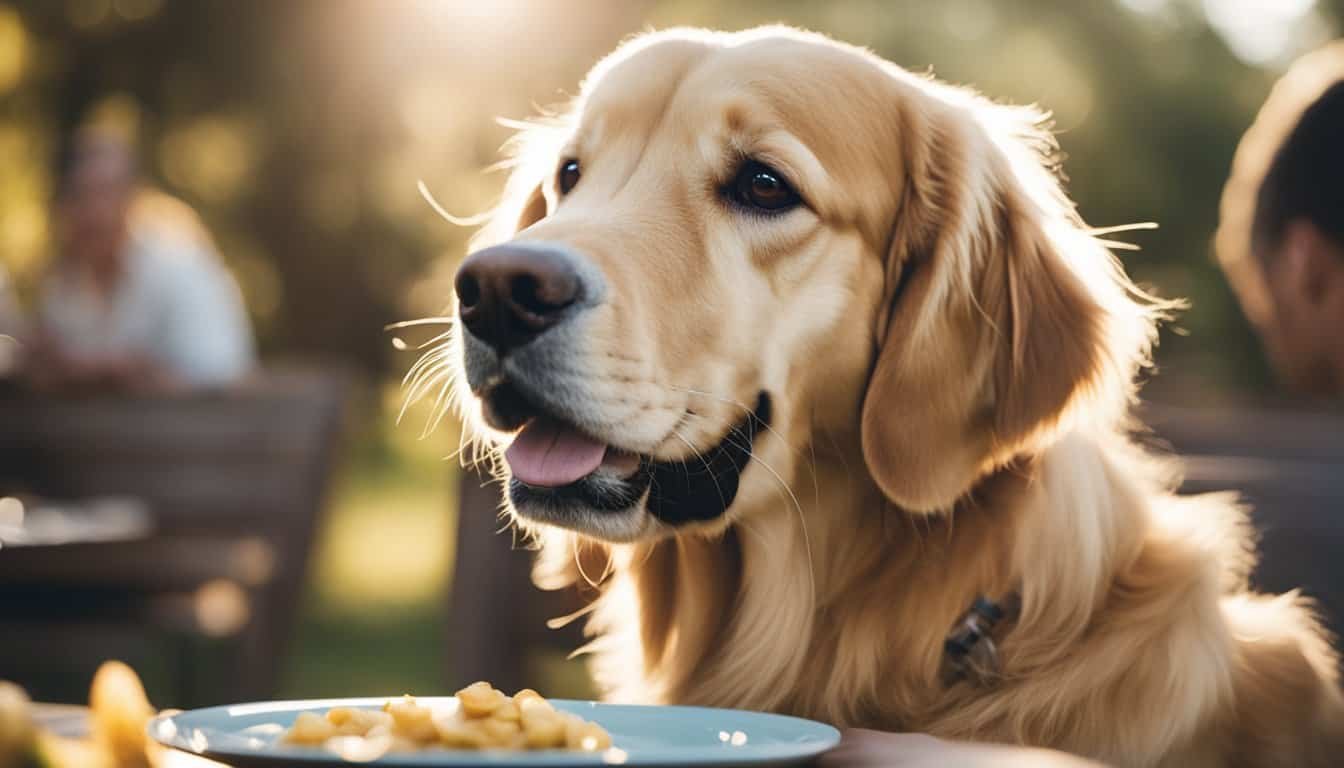
In conclusion, feeding your Golden Retriever puppy the correct amount of food is crucial for their overall health. Preventing overfeeding and obesity, identifying allergies and dietary needs, and feeding senior Golden Retrievers correctly are all important aspects of caring for your furry family member. By paying attention to their feeding frequency, portions, and overall health, you can ensure your Golden Retriever lives a long, healthy, and happy life.
When to Consult a Veterinarian
Feeding your golden retriever puppy properly is crucial to their health and well-being. However, there may be times when you need to consult a veterinarian to ensure that your puppy is healthy and getting the right amount of nutrition.
Here are some situations when you should consult a veterinarian:
1. Sudden Changes in Appetite
If your golden retriever puppy suddenly stops eating or starts eating more than usual, it may be a sign of a health problem. Consult a veterinarian if you notice any sudden changes in your puppy’s appetite.
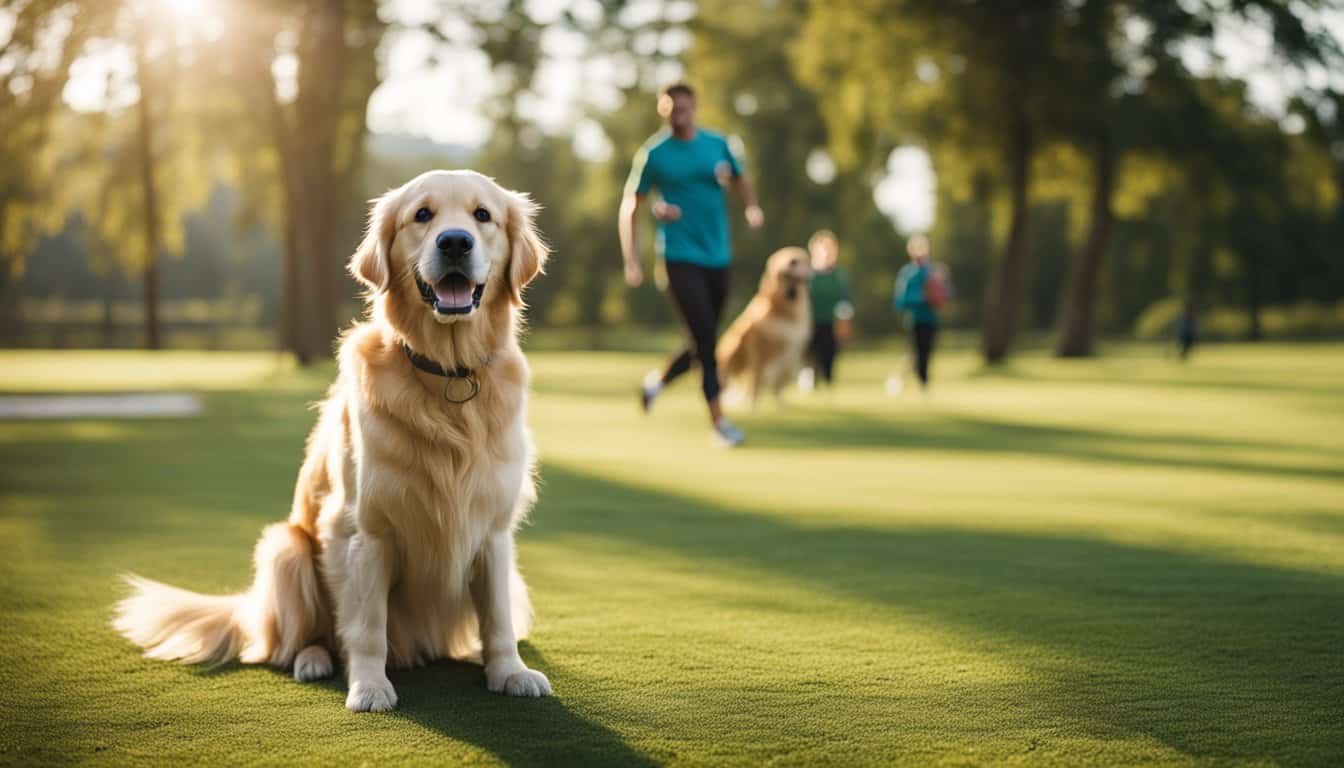
2. Digestive Issues
If your puppy experiences any digestive issues such as vomiting, diarrhea, or constipation, it may be a sign of a more serious health problem. Consult a veterinarian if your puppy is experiencing any of these issues.
3. Weight Gain or Loss
If your puppy is gaining or losing weight rapidly, it may be a sign of a health problem. Consult a veterinarian to ensure that your puppy is getting the right amount of nutrition and to rule out any underlying health issues.
4. Behavioral Changes
If your puppy is exhibiting any unusual behaviors such as lethargy, aggression, or anxiety, it may be a sign of a health problem. Consult a veterinarian if you notice any behavioral changes in your puppy.
Remember, your veterinarian is your best resource when it comes to your puppy’s health. If you have any concerns about your golden retriever puppy’s nutrition or health, don’t hesitate to consult a veterinarian. They can help you determine the best course of action to ensure that your puppy is healthy and happy.
Frequently Asked Questions
https://www.youtube.com/watch?v=TWC9eT8Ou6E&embed=true
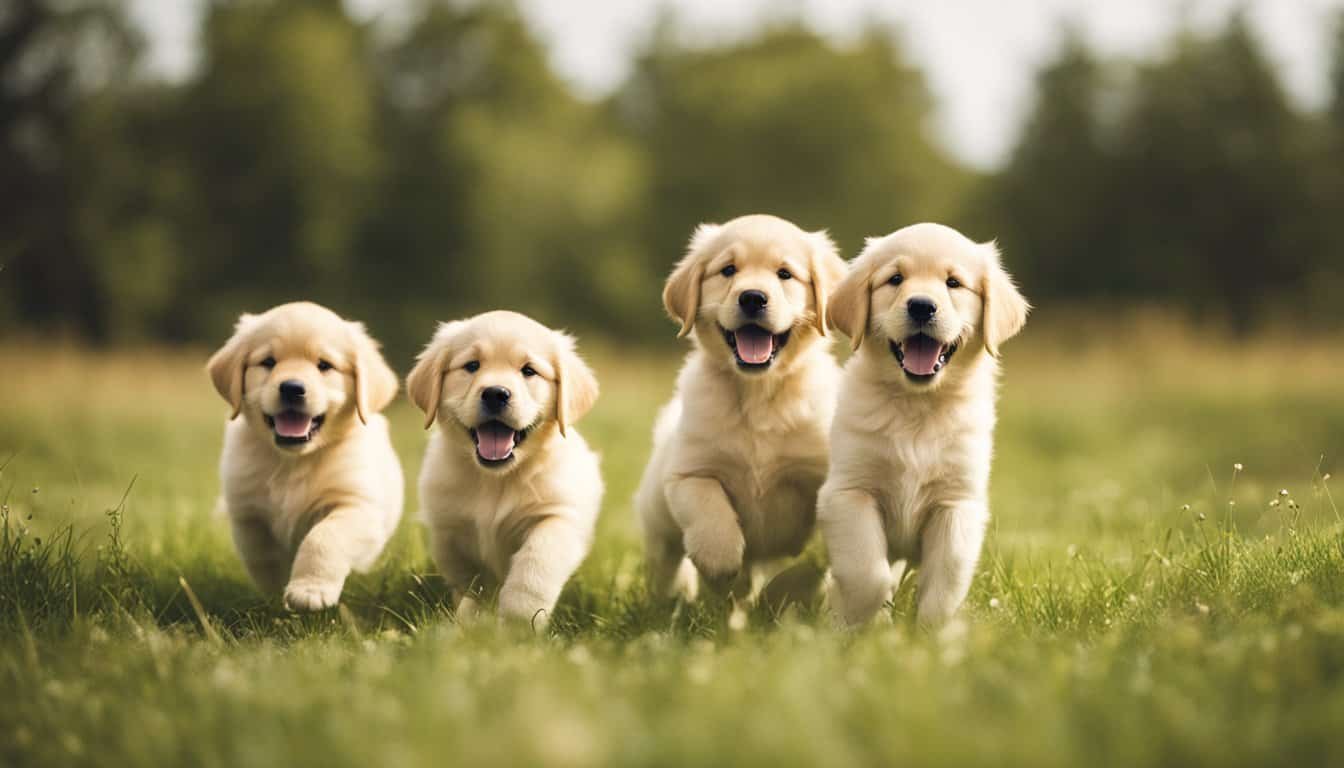
What is the recommended amount of food for a Golden Retriever puppy?
The amount of food a Golden Retriever puppy needs depends on their age, weight, and activity level. According to Love Your Dog, a Golden Retriever puppy needs around 2 to 4 cups of food per day until they are six months old. After that, adult Golden Retrievers need around 2 to 6 cups of food per day, and senior Golden Retrievers need less.
How often should I feed my Golden Retriever puppy?
From eight weeks old until about five or six months old, it is advisable to feed your Golden Retriever puppy three meals per day. Feed at the same intervals every day and split the total amount per day in half to be given at each feeding. After about six months of age through adulthood, two feedings per day are the norm. Puppy In Training recommends feeding your Golden Retriever puppy at the same time every day to establish a routine.
What is the best type of food for a Golden Retriever puppy?
The best type of food for a Golden Retriever puppy is high-quality puppy food that is specifically formulated for large breed puppies. Look for puppy food that contains protein, fat, and carbohydrates in the right proportions. Love Your Dog recommends choosing puppy food that has real meat as the first ingredient, and avoiding food that contains fillers, by-products, and artificial preservatives.
How much should I feed my 4 month old Golden Retriever puppy?
At four months old, your Golden Retriever puppy needs around 2 to 2.5 cups of food per day, divided into three meals. However, the exact amount of food your puppy needs depends on their weight and activity level. Bubbly Pet recommends consulting with your veterinarian to determine the appropriate amount of food for your puppy.
Is 2 cups of food enough for a Golden Retriever?
The amount of food a Golden Retriever needs depends on their age, weight, and activity level. Two cups of food per day may be enough for a small or inactive Golden Retriever, but most Golden Retrievers need more food than that. Golden Retriever Society recommends feeding your Golden Retriever puppy around 2 to 4 cups of food per day until they are six months old, and adult Golden Retrievers around 2 to 6 cups of food per day.
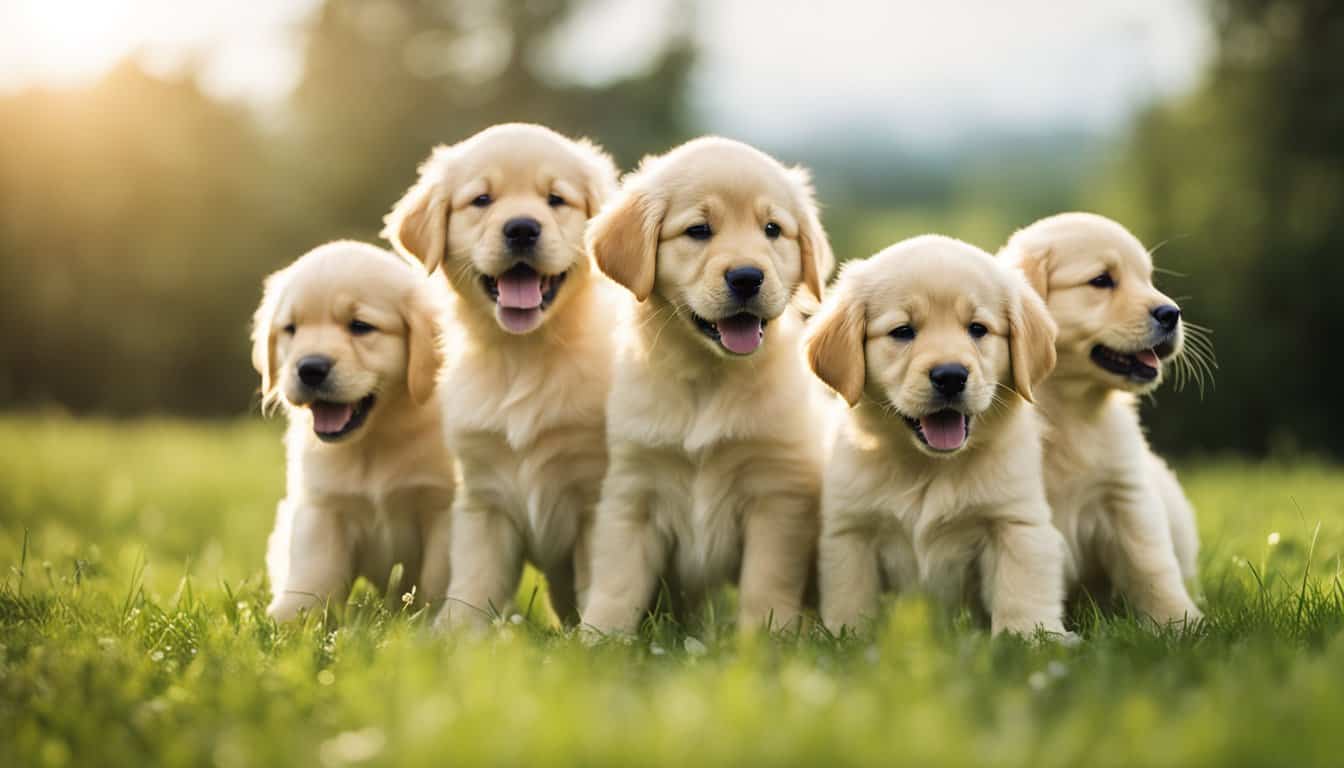
How much does a 12 week old Golden Retriever puppy typically weigh?
At 12 weeks old, a Golden Retriever puppy typically weighs around 22 to 27 pounds for males and 20 to 25 pounds for females. However, the exact weight of your puppy depends on their genetics, diet, and exercise. Spence Quinn recommends consulting with your veterinarian to ensure that your puppy is growing at a healthy rate.

